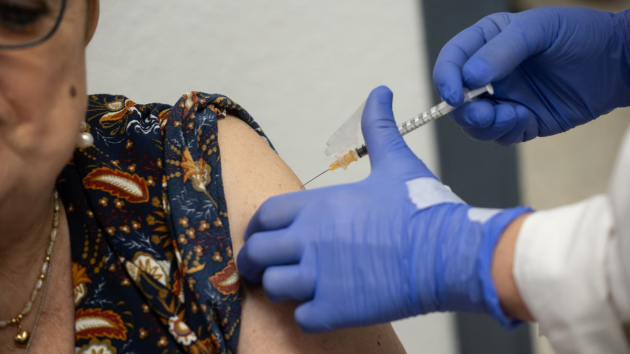What to know about President Biden’s executive order on women’s health research
Written by ABC Audio All Rights Reserved on March 18, 2024

(WASHINGTON) — President Joe Biden signed a sweeping executive order Monday promoting women’s health research as the country continues to celebrate Women’s History Month.
The White House described it as the “most comprehensive set of actions” taken by a president to advance women’s health research, which will focus on diseases and conditions that disproportionately affect women.
Biden has previously hinted to the initiative during his State of the Union address earlier this month, describing women’s health as chronically underfunded and calling on Congress to approve $12 billion to support a women’s health fund for the National Institutes of Health (NIH).
Here are some of the women’s health issues Biden said he wants to tackle in his executive order:
Research focusing on women’s health after menopause
Biden’s executive order will support research into women’s midlife health and diseases that are prevalent after menopause, including heart disease and osteoporosis.
The Department of Health and Human Services (HHS) will be directed to increase data collection about women’s midlife health and find ways to improve management of menopause-related issues.
After someone goes through menopause, their ovaries produce less estrogen, which increases the risk of developing certain health problems.
Heart disease is one of the most common health problems women face after menopause. Women have a lower risk of heart disease than men before age 55 because estrogen protects blood vessels and helps the body balance cholesterol levels.
Once a woman produces less estrogen, arteries can become thicker and stiffen, and “bad” cholesterol may build up on the walls of the arteries leading to heart disease.
By age 70, women have the same risk for heart disease as men of similar age, according to the HHS. They are also at increased risk of stroke.
Osteoporosis — a bone disease caused by a loss of bone density and bone mass as well as structural changes to the bone — is another risk facing postmenopausal women. Lower estrogen levels after menopause can speed up the loss of bone mass, increasing the risk of fractures.
It’s unknown how many older women have osteoporosis in the U.S. but, using criteria from the World Health Organization (WHO), it is estimated about 30% of caucasian postmenopausal women have osteoporosis, according to the Johns Hopkins Arthritis Center.
Under the executive order, Biden also stated the Secretary of Defense and the Secretary of Veterans Affairs will evaluate the needs of women service members and veterans for midlife health issues, including menopausal symptoms.
More women in clinical trials
In the executive order, the president said members of the initiative would work to “improve the recruitment, enrollment, and retention of women in clinical trials, including, as appropriate, by reducing barriers through technological and data sciences advances.”
As recently as the 1970s, few women were enrolled in clinical trials, and it was believed women’s health needs were a low priority.
In 1986, the NIH establish a policy that encouraged the inclusion of women in studies, but the policy was poorly communicated and inconsistently applied. Eventually, Congress passed a law in 1993 that established guidelines for the inclusion of women and underrepresented racial and ethnic minority groups in clinical research.
However, women are still underrepresented, particularly in the early stages of clinical trials. One 2022 study found women account for between 29% and 34% of early-stage clinical trials due to concerns about fertility. This can often lead to a lack of understanding about how women may respond to a new drug compared to men.
Another 2022 study from Harvard Medical School and Brigham and Women’s Hospital found females make up 60% of all patients with psychiatric disorders, but just 42% of participants in clinical trials investigating drugs and devices to treat those disorders. Similar findings were seen with examined data from clinical trials for cardiovascular disease and cancer.
Conditions with different symptoms for men and women
During a press call on Sunday afternoon, Dr. Carolyn Mazure, chairperson of the White House Initiative on Women’s Health Research, said the order will also focus on conditions that affect women disproportionately including Alzheimer’s disease and rheumatoid arthritis.
Women have a greater lifetime risk of developing Alzheimer’s disease than men, one reason being that women live longer than men, according to an article published in Harvard Health Publishing from Harvard Medical School.
However, it’s not understood if there are any biomarkers or other unknown factors that make women more susceptible.
In the case of rheumatoid arthritis (RA), women are up to three times more likely than men to be diagnosed with the condition. It is believed that several factors, including sex hormones, play a role, but researchers say more work needs to be done in understanding why women are more predisposed to developing RA and also why different joints are affected in women compared to men.
ABC News’ Frtiz Farrow and Selina Wang contributed to this report.
Copyright © 2024, ABC Audio. All rights reserved.

 KVSP
KVSP 





